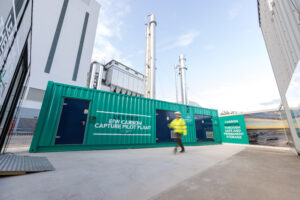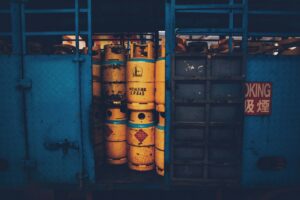Quick question: how can cement industry hit carbon neutrality by 2050?
With ambitious targets set by many firms, we learn some producers of a notoriously energy intensive material hope to see their footprint shrink.

Material science is coming in leaps and bounds in the bid to produce and manufacture a more sustainable future. Nevertheless, the built environment continues to account for around 40% of total emissions, and key to unlocking reductions in the immediate is moving away from high-polluting processes, developing new lower carbon products.
According to Murielle Goubard, Global Segment Manager at Malvern Panalytical, many cement producers are pushing towards a 30% reduction in CO2 emissions by 2030, and lifetime carbon neutrality by 2050. We want to know how.
What steps are being taken optimise processes and kilns?
Many cement manufacturers are carefully adjusting processes in the raw milling and pyro-processing stages to enhance efficiency. Ensuring the fine particle size distribution of raw mix particles is key since larger particles can trigger clinker formation issues.
Cutting-edge tools such as particle size analyzers and X-ray diffraction (XRD) are empowering manufacturers to maintain precise control over these parameters. This has resulted in increased throughput, substantial cost savings and reduced energy consumption.
What new fuels and sustainable materials are being trialled?
Reducing direct CO2 emissions in cement production remains a high priority across the industry. Co-processing is an approach widely used, whereby alternative fuels – such as biomass, mixed and fossil-waste fuels – are applied to recover the calorific value of waste materials and reduce carbon emissions.
To optimise combustion and kiln performance, accurate characterisation of these alternative fuels is imperative. A significant quantity of emissions in cement production comes from clinker production. Cement manufacturers are proactively incorporating alternative materials into their processes to address this issue.
Alternative materials, including blast-furnace slag, fly ash, calcined clays, pozzolans, and other industrial waste, reduce the reliance on clinker production, substantially reducing emissions.
How is automation improving efficiency?
Automated solutions, ranging from individual instruments to real-time online analysis, provide the precise control needed over processes, increasing sustainability. On-line solutions are particularly useful in busy industrial production environments as they address the very common sampling representativity issue that is one of the most critical steps in the monitoring and control process.
This technology can reduce human error, ensuring consistency in product quality. By embracing automation, cement manufacturers can optimise fuel and power costs, cut down on production expenses and meet stringent quality requirements.
What are the next steps?
The cement and concrete industry is making important progress in becoming carbon-neutral, despite it being a significant challenge. Implementing a connected, future-proof analytical strategy alongside more efficient manufacturing practices, heightened recycling rates, electrification, renewable energy integration, and carbon capture could potentially cut industrial emissions by up to three-quarters by 2050.
While sustainability efforts involve investment, they also offer substantial opportunities for cost savings. The cement and concrete industry is increasingly focused on delivering a greener future, where sustainability and profitability go hand in hand. Aligning with industry trends and adopting sustainable practices, the sector will continue to navigate a path toward an environmentally friendly and economically viable future.
More quick questions:
Quick question: Which countries produce most renewable electricity per capita?
Quick question: How do vanadium flow batteries stabilise a renewable grid?
Quick question: How can hotels cut water use with eco-feedback?
Image: Malvern Panalytical
















